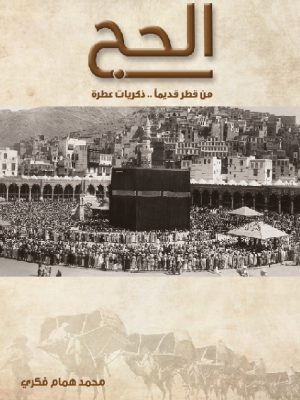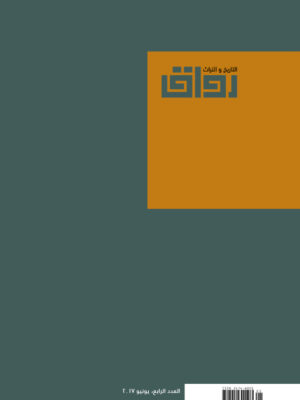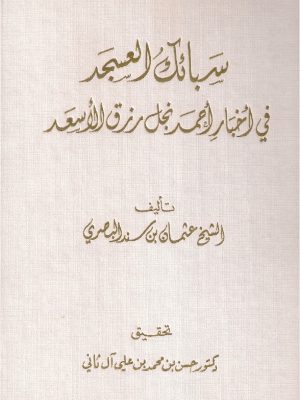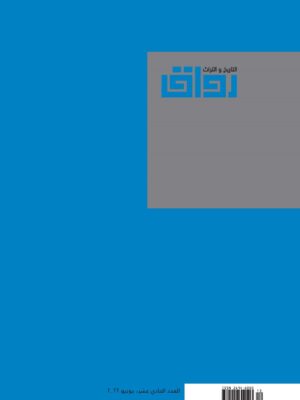الوصف
أصدر المركز العدد السابع من "رواق التاريخ والتراث". يحتوي على عدد من البحوث الأكاديمية والعلمية.
"دكتور. عبد الله عبد المعطي "الكوميديا الإلهية" لـ "دانتي" كما يراها العرب والمسلمون. ويتساءل عما إذا كانت هناك مصادر عربية إسلامية جديدة من شأنها أن تساعد في تقديم فكرة جديدة عنها. كما يتساءل كيف ينظر النقاد والكتاب والمؤرخون العرب والمسلمون إلى "الكوميديا الإلهية" ومؤلفها "دانتي أليغييري". كما يستفسر عما إذا كانت هناك مصادر جديدة ، بخلاف المصادر المعروفة ، ربما استخدمها "دانتي" أو اعتمدها في أشهر قصائده في تاريخ الأدب الأوروبي. يقول إذا كانت هناك مصادر جديدة فما هي وما الدليل على صحتها؟
“Dr. Mustafa Mawaldi” discusses how Arab Mathematics was transferred to the “Latin West” and talks about the significant additions to this Science by Arab Scholars, saying that these additions led clearly to the development of Mathematics and left obvious and direct impacts on the works of the Scholars of the Renaissance. Arab Mathematics was influenced by the mathematics of ancient civilizations and had several influences on the various branches of mathematics.
Dr. “Ahmed Al-Adawi” deals with “Notes on Some Lost Historical Books of Sabians of Harran in the Third and Fourth Centuries AH/ the Ninth and Tenth centuries AD.” that were recorded by some historians of “Sabians” of “Harran”. These works were appreciated by old authors and historians, but they were lost totally or in part. He also examines some of those works’ characteristics- that became known through excerpts came to us from some historians and authors- and their importance in the context of historical writing at that time.
Dr.”Yassin Yahyaoui” traces the founding moments of the origin of new envisions about “Byzantium” in the first Arab writings in the early Islam era. He analyzes “The Other Byzantine in early Islam: from Self-Awareness to the Production of the Imaginary, emphasizing that this historical inquiry has two orientations, for inventing the image of the Other is the beginning of self-awareness. The Prophetic biography, the way we received its historical events through the “Maghaazi” writings and biographies, is considered an aide to trace the emergence of the Arab ego in facing others including the Byzantine Other.
Dr. “Ali Al-Sayyid” deals with the role of “Islamic Awqaf and Peace-Building among Peoples: the Constructive and Socio-cultural Role of the Waqf and Hospitality of Tamim Al-Dari.”. He talks about establishing a charity sector in the Palestinian city of “Hebron” that was devoted by the companion “Tamim “Al-Dari” to spend on the “Sanctuary of Abraham” and its attached accommodation. He then discusses the stages of the development of Waqf from middle ages until the Mamluk era. The building of Waqf played a significant social role and was visited by foreigners and the needy, and it accommodated Jews, Christians and Muslims.
Dr. “Hossam Abdel Muti” raises many questions about “Shahbandar of Cairo Traders during the Ottoman Era 923-1232 AH / 1517-1816 AD”, about the factors of emergence of this position, about the mechanisms of selecting its occupant, about his relation with the governing political authority, about the role of the later in choosing the occupant of this position. History and literature are being interrelated in this study through analyzing the structure of commercial order in Cairo.
Dr.” Mustafa Wajih” analyzes the image of “Egypt in the Eyes of Ibn Al Sabah Al Andalusi: An Image from Economic Life at the Time of Mamluk Sultans”, providing details on the Egyptians’ daily life- especially women- and on their ceremonies and means of living. Egypt was visited during the Islamic era by many travelers; among them was the Mudéjar “Abdullah Al Sabah Al Andalusi”, whose voyage was no less important- if not more- than those of former travelers.






المراجعات
لا توجد مراجعات بعد.